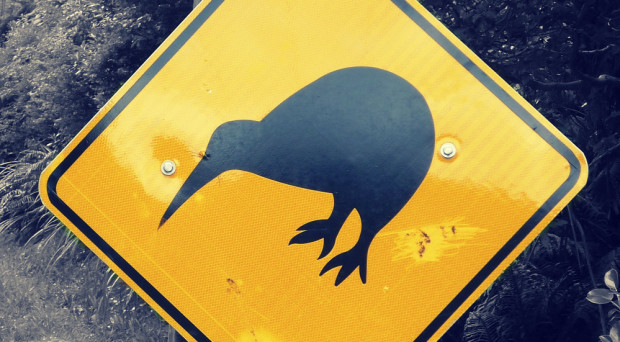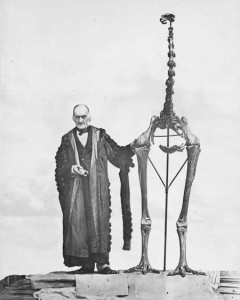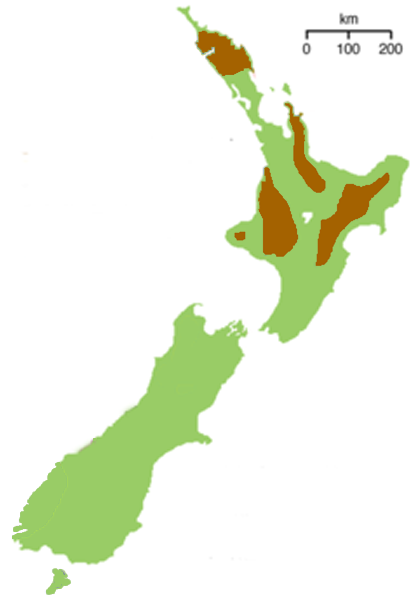
The kiwi is a small, flightless nocturnal bird endemic to New Zealand. It is the symbol of that country to such an extent that its name usefully fills the gap in the language caused by the absence of a word meaning ‘New Zealandish’.
The five species are part of the ratite family, which also includes ostriches and emus, but they are quite different from the other ratites, not least in their rather small size. Kiwi are unusual birds in many other ways too. They almost completely lack wings, having just some rudimentary stumps largely hidden beneath their feathers (hence the Latin name for the genus, Apteryx, meaning ‘without wings’).
Those feathers themselves are soft and downy, more like fur than the feathers of other birds, so would be useless for flight, but are excellent for keeping the birds warm (the Maori prize kiwi feathers for making cloaks).
Since kiwi don’t fly, they don’t need a keel on their sternum to anchor the wing muscles to, and they have marrow-filled bones, unlike the hollow bones of other birds. They are nocturnal, which is rare in birds, and have an unusually well-developed sense of smell. Although being small, they lay the largest egg in relation to their body size of any bird.

Researchers led by Diana Le Duc have just sequenced the genome of the kiwi (specifically of a North Island brown kiwi, Apteryx mantelli) and published it in Genome Biology.
The analysis of the genome has provided insights into several of these unusual characteristics. The authors found inactivating mutations in two opsin genes required for detection of green and blue light. Loss of color vision is common in nocturnal animals. The authors estimate these mutations occurred 30-38 million years ago, which is estimated to be after the kiwi arrived in New Zealand.
It is known that another family of ratites, the moa, were already present on the islands when the kiwi got there, so the authors speculate that kiwi adapted to a nocturnal lifestyle because the moa were already filling the available niches during the day time.
The move to night-time living probably resulted in the kiwi starting to use its nose to forage for its invertebrate food. As expected, the genome contains more olfactory receptor genes than other bird genomes, to let the kiwi sniff out its dinner.
Perhaps the most notable phenotype of the kiwi is its tiny wings, and the authors scanned the genome for mutations in genes known to be involved in vertebrate limb development. They found no obvious differences in the genes themselves that could account for the limited wings. They did, however, find changes in possible regulatory regions of four relevant genes, suggesting that it is changes in expression of these genes that has caused the shrinkage of the limbs.

Flightlessness evolved after the kiwi had lived for a million years on New Zealand without any ground-based predators. Since Europeans have introduced mammals to the islands, the kiwi population has declined worryingly as the nests are vulnerable to stoats and other predators, and the birds now exist in just a few small areas.
In this study the authors compared the genome sequences of two North Island brown kiwi and found a very low sequence diversity, consistent with a high level of inbreeding. This suggests that the population is even more vulnerable than previously thought.
It is to be hoped that the genome sequence described in this study, as well as providing insight into the biology of these strange birds, can also be used to strengthen conservation efforts so they’ll be around for some time yet.
- Exploring the history of smallpox vaccination with 19th Century American vaccination kits - 16th November 2020
- The fascination of plant genomes - 20th May 2019
- Genome Biology at Genome Informatics - 18th February 2019
Comments